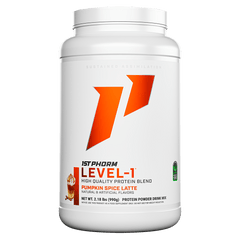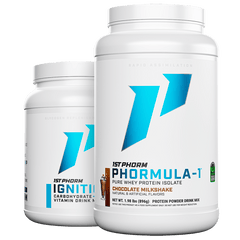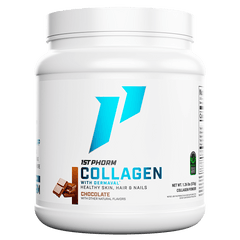If you’re experiencing joint pain or discomfort, you’re far from alone. Joint pain is extremely common.
In one national survey, about one-third of adults reported having joint pain within the past 30 days.
Knee pain was the most common complaint, followed by shoulder and hip pain. However, joint pain can affect any part of your body, from your ankles and feet to your shoulders and hands.
If you’ve ever had joint pain, I think you would agree that it can have a huge effect on your quality of life. When it hurts to move, you simply don’t want to move.
To avoid and prevent joint pain, we must first know what can cause joint pain.
In This Article:
• 5 Common Causes of Joint Pain
• 4 Ways To Prevent Joint Pain
• Other Solutions for Joint Pain
The 5 Most Common Causes of Joint Pain for Gym Goers
Overuse
Many overuse injuries result from doing too much exercise too soon.
But overuse injuries also occur with experienced lifters who don’t give themselves time to rest and recover.
When you work out, you are breaking down your body ... don't forget that.
If you don't recover properly, it can lead to excessive wear and tear. This can eventually lead to joint pain.
Why? Because your tendons and joints have to work harder due to the fatigued and broken-down state of your muscles.
This is one of the reasons why giving your body what it needs post-workout is essential to your results and overall health. The same can be said about quality sleep and purposeful rest for your body!
Stress
In today’s society, there is no avoiding stress! We're all stressed out to some degree or another.
But when you’re overly stressed, your immune system can’t control its response to inflammation as effectively.
As inflammation builds inside of your body, it can lead to many health issues ... one of which is joint pain and discomfort.
Muscle Imbalances
Your joints are surrounded by muscles to create movement. This helps you do anything from brushing your teeth to squatting a heavy load.
Joint pain can happen when certain muscles are dominating the relationship around the joint. This is often due to working one muscle harder than the opposite muscle (example: hamstring vs. quads).
Normally, these muscles work together to create fluid and proper movement. However, when one muscle group overpowers the other, poor movement patterns and overcompensation can take place. This just puts extra stress on the joints.
Finding a good mobility and stretching routine before and after your training can help alleviate these issues. Corrective exercise to fix these imbalances can also be important.
Aging
As you get older, painful joints become increasingly more common. This is due to changes in cartilage and connective tissues, leaving the joint more susceptible to damage.
This change also limits the range of motion of joints.
Medical Conditions
There are also several different medical conditions that can lead to joint pain. These include osteoarthritis, rheumatoid arthritis, psoriatic arthritis, bursitis, gout, lupus, and more.
If you think you have a medical condition that is leading to joint pain, stiffness, and discomfort ... It would be best to talk to your primary care physician.
But, now that you know some of the most common causes of joint pain ... It leads us to an important question. How do you prevent joint pain while working out?
4 Ways To Prevent Joint Pain
Proper Warm-up and Cool Down
As I mentioned earlier, you should always invest the time to run your body through a proper warm-up and cool-down as part of every workout. Warming up your joints can help increase range of motion and eliminate stiffness. It can also help lower your risk of injury.
Cooling down with stretching afterwards can help alleviate muscle tightness. This tightness can pull on joints, causing discomfort. That's why a proper cool-down can be essential.
Well-Balanced Workout Routine
One of the best ways to prevent joint issues from muscle imbalances is to have a balanced approach to your training. By this, I mean training your body from head to toe.
An easy way to stay on track with this is by emphasizing compound movements. These are multi-joint movements. Basically, they're exercises that engage multiple muscle groups at once.
Reducing Inflammation
With inflammation being a leading cause of joint pain ... Reducing inflammation can be a great way to alleviate joint pain. How, you ask? It should be done through your nutrition and supplementation.
Leafy green vegetables, antioxidant-rich foods, and omega-3s can be helpful for reducing inflammation. So, making sure you are getting plenty of these nutrients can be important.
Adequate Amounts of Rest and Recovery
The amount of rest everyone needs will vary.
This is because many factors like age, sleep patterns, stress levels, training style, how hard you train, and more can all come into play.
But a few telltale signs that you might need to take more time to recover would be feeling fatigued, your body aching, and of course … joint pain!
Other Solutions For Joint Pain
Whether you’ve experienced joint pain for a brief moment or a long time … I think we can all agree that it’s no fun at all.
When we experience joint pain it makes it hard to perform daily tasks, let alone get a great workout in!
But the good news is, now knowing the common causes of joint pain for the avid gym-goer like yourself … you can work to prevent it from happening in the first place.
...and if you do start experiencing joint pain, there are ways to help alleviate it through lifestyle changes, nutrition, supplementation, and medical attention if needed.
At 1st Phorm, we actually offer a few products that can help support healthy joints: Joint Mobility and Full-Mega.
Joint Mobility is formulated with powerful, researched ingredients designed to help support joint health and comfort naturally.
On the other hand, Full-Mega is our omega-3 fish oil supplement, which can help support reduced inflammation.
You can even get both supplements together at a bundled price in The Joint Stack!
As always, if you have any questions or need any help, don't hesitate to reach out! We have a full team of NASM Certified Personal Trainers and Nutrition Coaches right here in St. Louis, Missouri.
Just give us a call at 1-800-409-9732 or send us an email at CustomerService@1stPhorm.com. We're available Monday through Friday from 6 AM to 8 PM Central and Saturday & Sunday from 9 AM to 7 PM Central. We'll be more than happy to help in any way we can!













